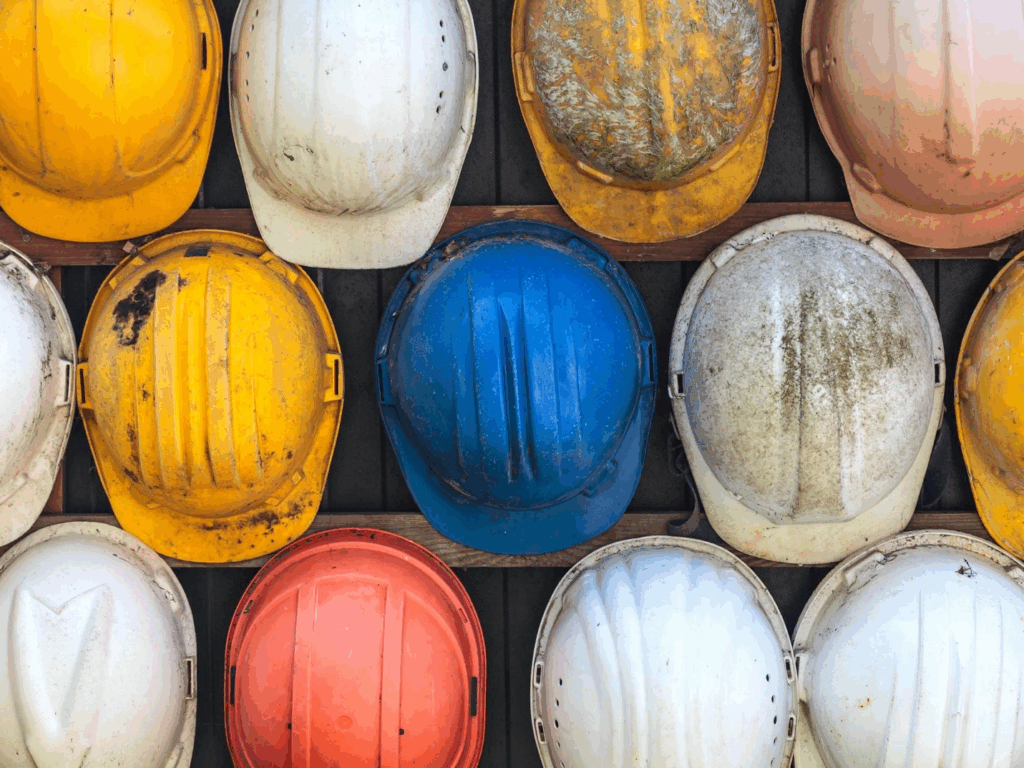
(photo credit: Microsoft Stock Images)
Construction crews everywhere. Machines humming, beeping, backing up. Steel beams swinging in tight arcs. The job site feels alive, but too alive. Congestion does more than slow work. It tightens margins for error until even the smallest mistake has consequences that can ripple through an entire project.
Accidents Waiting to Happen
Picture this: a forklift nudging forward, a worker stepping back at the same moment, a pallet sitting half in a walkway. One second of overlap, and suddenly the risk multiplies. Crowded job sites amplify these moments. Space shrinks. Visibility drops. The room to adjust vanishes completely.
Falls climb quickly under these conditions. Walkways turn into bottlenecks, scaffolding becomes crowded, ladders bear more weight than intended. A shortcut taken because the direct path is blocked can be the exact moment an injury occurs. And once accidents begin, they ripple, stopping work, shifting focus, and eating valuable time.
Communication Breakdowns
Noise becomes its own hazard. The clatter of tools, the hiss of welding, the constant background roar. Instructions are shouted but drowned. Warnings come late or not at all. Crowded conditions scramble clarity. Workers overlap responsibilities. Equipment moves without everyone knowing.
The answer is often simple in theory, harder in practice: fewer crews in the same space. Staggered shifts. Zones with clear ownership. Supervisors watching for choke points before they become real problems. Without that control, communication collapses into confusion that can spread across the entire site.
Materials and Equipment in the Way
Congestion creates clutter. Piles of tools stacked wherever they fit. Materials leaning against temporary walls. Walkways filled with cords, buckets, and boxes. Hazards disguised as convenience.
Machinery jammed into tight corners increases risks further. Emergency routes vanish under the weight of parked vehicles. Sparks fly from welding too close to flammable material. Even protective steps like using a coated rod during welding cannot erase the danger when space itself is compromised.
Storage rules exist for a reason, yet under pressure they bend. Crowded job sites encourage bending until it eventually breaks.
Practical Steps That Matter
Planning changes everything. Schedules that separate high-risk activities from precision work. Digital project tools that spread crews across timelines rather than stacking them. Breathing room baked into the design makes the difference.
Training matters too. Workers who can spot unsafe congestion before it causes injury. Supervisors who enforce storage and traffic flow rules, even under pressure to move faster. Audits done regularly, not after incidents. These steps are not glamorous, but they remain essential for safety.
Awareness as a Culture
The crowded job site does not have to be an inevitability. It is a condition created, which means it can be managed. Awareness is the first step, but structure, planning, and discipline keep it alive and effective.
Space is more than a physical measure. It is a safeguard. Workers need it, machines need it, projects need it. Clearing room, whether through scheduling, layout, or training, creates more than efficiency. It creates safety, and safety is what keeps progress moving without turning into preventable injury. For more information, look over the infographic below.
